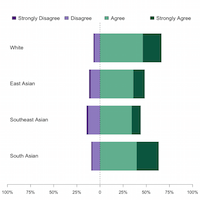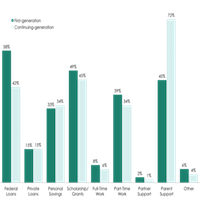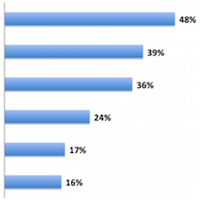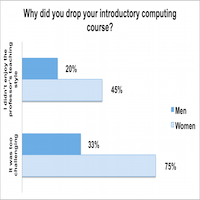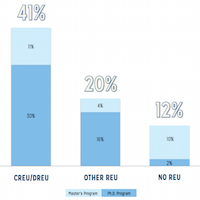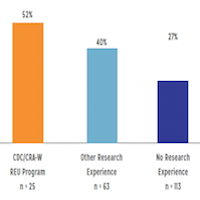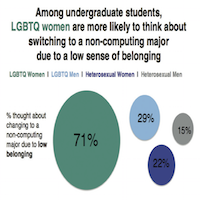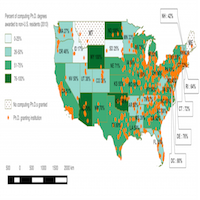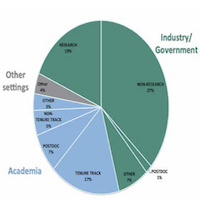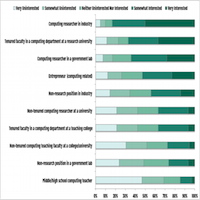
Ph.D. Students’ Interest in Computing Career Options
In 2015, CERP asked 1,335 students enrolled in Ph.D. programs to report their interest in a variety of computing professions. The distribution of students’ year in their program was as follows: 22% first year, 21% second year, 13% third year, 12% fourth year, 10% fifth year, 10% sixth year or greater, and 12% unspecified. As seen in the graphic above, students were most interested in pursuing a computing research job in industry, followed by tenure track computing faculty at a research university, computing researcher in a government lab, and entrepreneurial work in computing. Students were least interested in becoming a middle or high school computing teacher.


